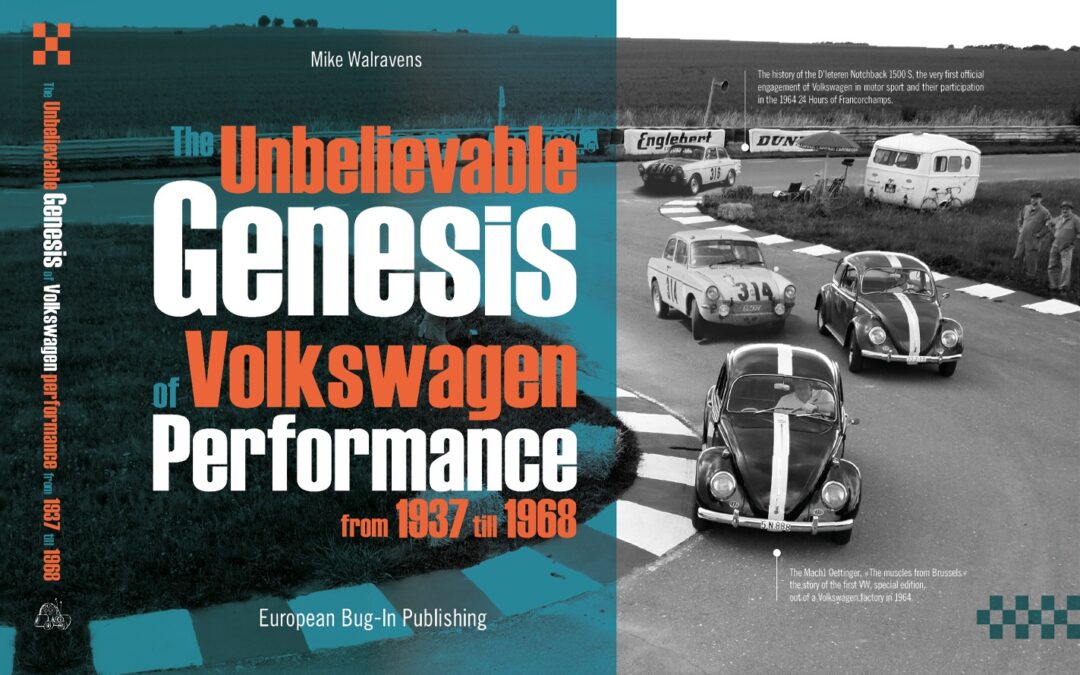
This beautiful book tells the story of the birth of the infamous Blower Bentley, through the life of the first ever example – YU 3250. Starting with W.O. Bentley and his band of brothers, we join them at the end of the Great War, following them from the prototype 3 Litre through to the Bentley Boys and other notable investors, before Tim Birkin takes on the production of his Blower project at Welwyn.
Extensively researched by Bentley authority Clare Hay and written by Giles Chapman, this hard-back book offers a wealth of period and contemporary photos, documenting the life of the most famous Bentley of all.
Hardcover in slipcase
Limited edition of 1000
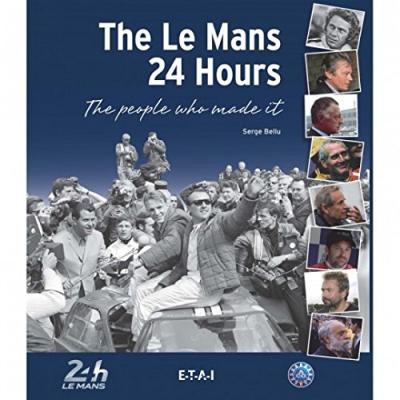
It would seem everything has been said and written about the 24 Hours of Le Mans and the history, starting with the first race in 1923.
No previous work has explored the personalities that have shaped the legendary race. Engineers, designers and – of course – drivers, these individuals are as much a part of the story as the cars.
Indeed, the race is an environment for collaboration and exchange of professional and human experience.In this context the contribution of different stakeholders provides a universal scale in the 24 Hours of Le Mans.
The birth of the race was made possible by an elite group consisting of individuals who have a direct or indirect role in the automotive industry. These famous and influential men give a special luster to the event.
In the second chapter of the book, the author emphasizes the role of engineers who take advantage of the event to experiment with new and innovative techniques, while artists, especially visual artists, find an opportunity to let free rein to their imagination in decorating the cars.
On the other hand, the enlightened and talented amateurs, called gentlemen-drivers, provide a unique panache to the 24 Hours of Le Mans. Not to mention the contribution of anonymous backstage workers such ss volunteers, commissioners, tracks marshals and doctors.
Serge Bellu is an expert in design and automotive history, frequent contributor to several magazines and the author of several books including “Abarth – The Rebirth” and “500 extraordinary cars – The adventure of the concept car.”
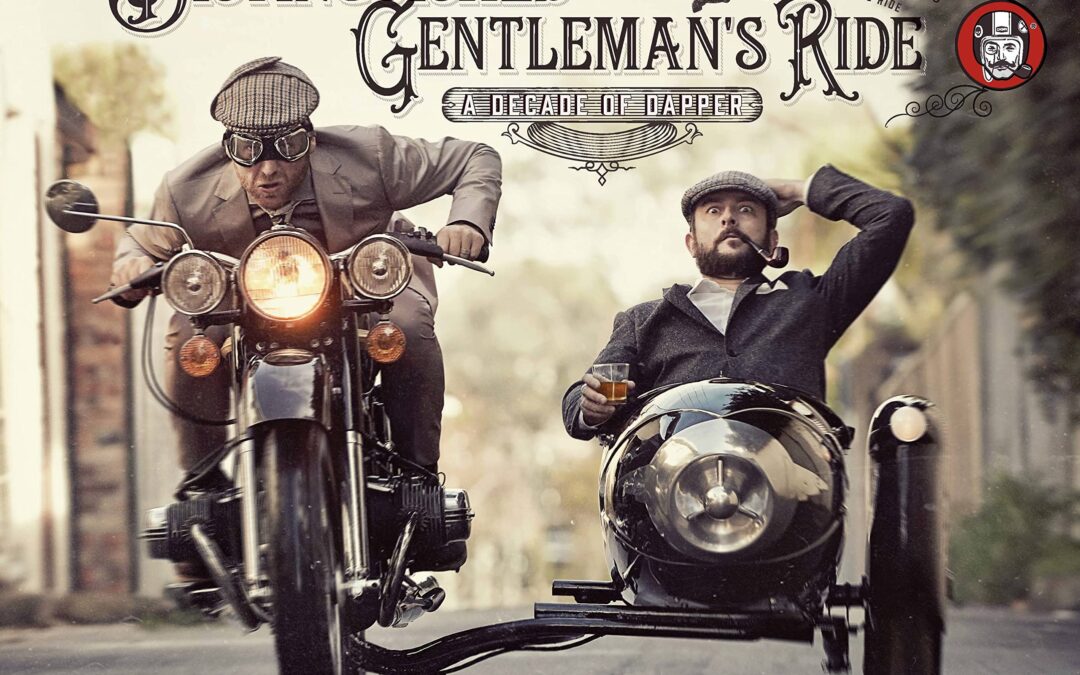
The Distinguished Gentleman’s Ride: Decade of Dapper documents and celebrates 10 years of raising funds and awareness for men’s health initiatives with engaging stories and gorgeous photography. Starting from the simple, joyous act of riding a motorcycle, The Distinguished Gentleman’s Ride (DGR) has united hundreds of thousands of smartly dressed gentlefolk around the world on classic and vintage-style motorcycles to raise
over $35 million for prostate cancer and men’s mental health initiatives. The annual event has attracted the world’s attention and created some truly amazing stories (and thousands of great images) along the way.
The success of the DGR has seen it become so much more than just a charity event. It’s now a kind of global moto family that’s made up of thousands of incredible stories, characters, cities, and ambassadors that are all wrapped up in a kind of motorcycling fashion renaissance. It’s as much about the amazing people that make it happen as it is about the bikes.
The Distinguished Gentleman’s Ride is filled with:
- Engaging stories about the riders and what motivates them
- Dapper fashion and stunning images from dozens of celebrated moto photographers in some of the world’s most iconic locations
- Personal contributions from the likes of actor and TV presenter Charley Boorman, MotoGP world champion Freddy Spencer, and actor Jai Courtney
As a lasting record of the hundreds of stories of triumph and heartbreak from the DGR family, this book brings to life the positive, global impact that motorcyclists have made on men’s health.
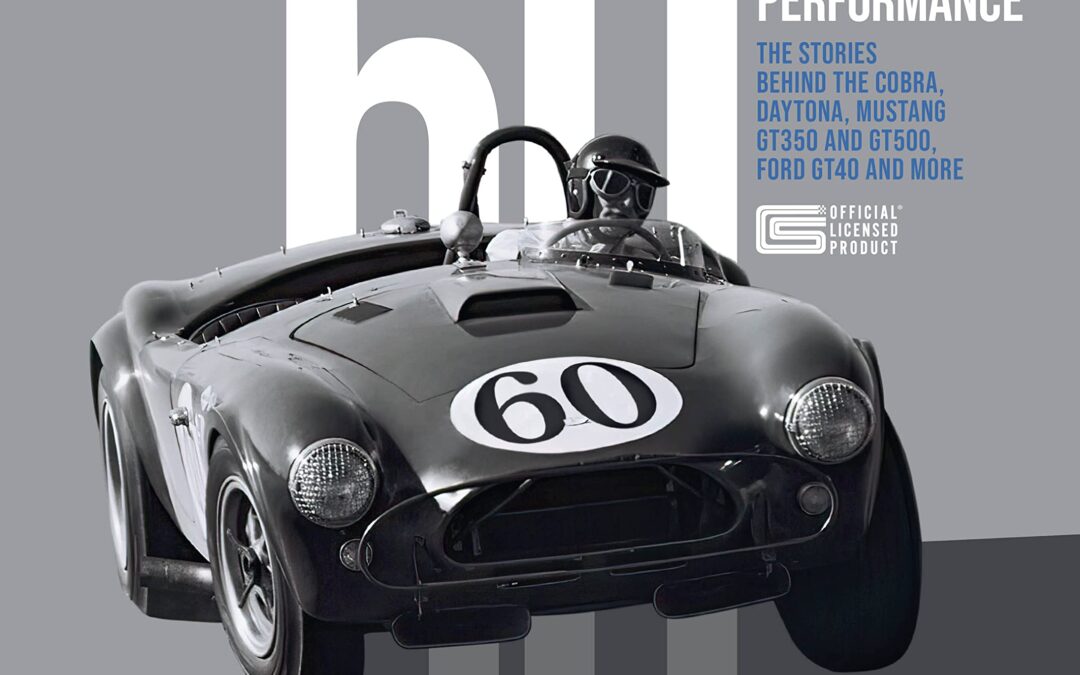
Six Decades of Shelby performance—from the first Shelby AC Cobra to today’s Mustang Shelby GT500!
A bad heart forced Carroll Shelby, one of the top racing drivers of all time, to retire in 1960. But that didn’t stop the lanky Texan from continuing to make history. He launched Shelby American in 1962 with the creation of the brilliant Ford-powered AC Cobra, soon to dominate both U.S. and international sports car racing. Shelby’s winning ways soon led to Ford seeking Shelby’s team of “hot rodders” help to make the Ford GT program a success. It worked. Shelby and Ford soon stunned the motorsports world by winning Le Mans and dominating other venues from 1966 to 1969 with the GT40. Fifty-three years later the legendary first Le Mans win of 1966 would form the basis for the acclaimed film Ford Versus Ferrari. As if the Cobra, Daytona Coupe, and GT40 were not enough, this small team of hot rodders, fabricators, and race mechanics also created the Shelby Mustang GT350 in 1965, and the GT500 two years later. Shelby American was nothing short of lightning in a bottle from 1962-1970.
Shelby American 60 Years of High Performance covers all of these early triumphs, following the proceedings from a small shop in Venice, California, to sprawling digs at LAX all the while developing new road cars, running a top race team, and giving privateer racers the cars they needed to win. Get to know Shelby, as well as the innovators who surrounded him, including designer Peter Brock, genius engineer Phil Remington, “Mr. GT350” Chuck Cantwell, and a roster of top drivers that included Ken Miles, Bob Bondurant, Dan Gurney, Bruce McLaren, Denny Hulme, A.J. Foyt, Mario Andretti, and more.
Authors Colin Comer and Rick Kopec, leading Shelby historians, follow the Shelby story through Carroll’s post-Ford relationship with Dodge, including his roles in the giant-killing, pocket-rocket Shelby Charger, GLH (“Goes Like Hell”), and GLH-S cars along with a slew of other Shelby-ized machines including his role in the birth and development of the menacing Dodge Viper.
The story of the late Carroll Shelby and the company he founded is a classic tale of ingenuity, grit, and perseverance. Illustrated throughout with rare period imagery and modern color photography, Shelby American 60 Years of High Performance is the ultimate tribute to Shelby American and the team that made it all happen.

- A stunning coffee table book of historically significant NASA photos
- Amazing photographs complemented by quotes and stories from noted personalities at NASA
- A chronological journey through NASA’s history, from Apollo to the James Webb Telescope
- Awe-inspiring, inspirational and motivational, a perfect gift and a must for your library
- Quotes from astronauts Commander James Lovell and John Glenn, as well as John F Kennedy, Ralph Waldo Emerson and many more
“The history of space exploration is best presented in this book of NASA photographs, whose images are universally inspirational.” – Commander James Lovell, Apollo 13
NASA has worked at the forefront of space exploration and research since 1958. Their devotion to furthering our understanding of what lies beyond our atmosphere has seen 12 humans walk on the surface of the moon, helped form the International Space Station, and placed numerous rovers on Mars. Voyager 1, launched by NASA on 5 September 1977, is the furthest manmade object from earth, having left our solar system entirely – and the agency’s plans for the future are equally inspiring.
This book celebrates NASA throughout the years, from its inception to its 60th anniversary in 2018, and beyond. A visual tour-de-force, the book collects high resolution NASA photos of historic significance; from rarely seen photos and the words of President John F. Kennedy commanding the space race, to the many triumphs and tragedies of the Apollo Missions, moon landings, the International Space Station, space shuttles, journeys to Mars and explorations of our galaxy’s outer reaches. These breathtaking images are complemented by heartfelt words of hopes and imagination for the future, encouraging readers to admire their world from a different perspective. NASA: the Greatest Milestones is a stunning 300 page book.

A spirited, insightful exploration of our favorite machine and it’s cultural impact on society over the past one hundred and fifty years.
More than any other technology, cars have transformed American popular culture. Cars have created vast wealth as well as novel dreams of freedom and mobility. They have transformed our sense of distance and made the world infinitely more available to our eyes and our imaginations. They have inspired cinema, music and literature; they have, by their need for roads, bridges, filling stations, huge factories and global supply chains, re-engineered the world. Almost everything we now need, want, imagine or aspire to assumes the existence of cars in all their limitless power and their complex systems of meanings.
This book celebrates the immense drama and beauty of the car, of the genius embodied in the Ford Model T, of the glory of the brilliant-red Mercedes Benz S-Class made by workers for Nelson Mandela on his release from prison, of Kanye West’s ‘chopped’ Maybach, of the salvation of the Volkswagen Beetle by Major Ivan Hirst, of Elvis Presley’s 100 Cadillacs, of the Rolls-Royce Silver Ghost and the BMC Mini and even of that harbinger of the end—the Tesla Model S and its creator Elon Musk.
As the age of the car as we know it comes to an end, Bryan Appleyard’s brilliantly insightful book tells the story of the rise and fall of the incredible machine that made the modern world what it is today.

As Lewis Hamilton, Max Verstappen and Charles Leclerc battle it out head-to-head in the most hotly contested championship in years, this in-depth book, with a foreword from Haas team principal Guenther Steiner, tells the story of how the sport evolved into the exhilarating high octane spectacle it is today.
The new rules introduced in 2022 signal the greatest change to F1 in a generation, cracking the field wide open and seeing some of the most compelling and competitive races in the last 25 years.
Technical changes aimed at levelling the playing field for the teams combined with the sport’s tightening budget cap have made the races closer than ever. There will be more sprint races – trialed in 2021 – and greater fan interest driven by Netflix’s hugely successful ‘Drive to Survive’ series.
So, how did we get here? How did F1 become the acknowledged ‘Pinnacle of Motorsport’? Simon Arron and Tony Dodgins have identified the 100 most significant changes to the series since its inception in 1950. Formula One is unrecognizable from its debut season, where drivers raced around on old bomber training aerodrome in Northamptonshire with oil drums to mark the corners and straw bales the only concession to safety.
New fans will welcome a complete and highly illustrated guide to the history of F1, while older fans will be able to compare their own views of what were the pivotal moments of change, in a book written by experienced motoring writers with two lifetimes worth of knowledge of the sport.
The book will link technical progress with the personalities involved, indeed many of the swiftest changes have come about as a result of accidents or tragedies – the death of Roland Ratzenberger at Imola in 1994, the same weekend as Ayrton Senna, could have been avoided by the HANS safety device. The introduction of the halo saved Romain Grosjean’s life in Bahrain last year, but only came about because of the tragic accident that claimed Jules Bianchi in Japan.
Along with changes to circuits and the technology of the cars, this book highlights the commercial changes and the controversies that threatened to split the sport apart – such as the threat of breakaway series proposed at various times by teams.
A must-read for completists or for those new to the sport, F1: The Pinnacle is a fascinating insight into one of the most exciting and dangerous sports in the world.
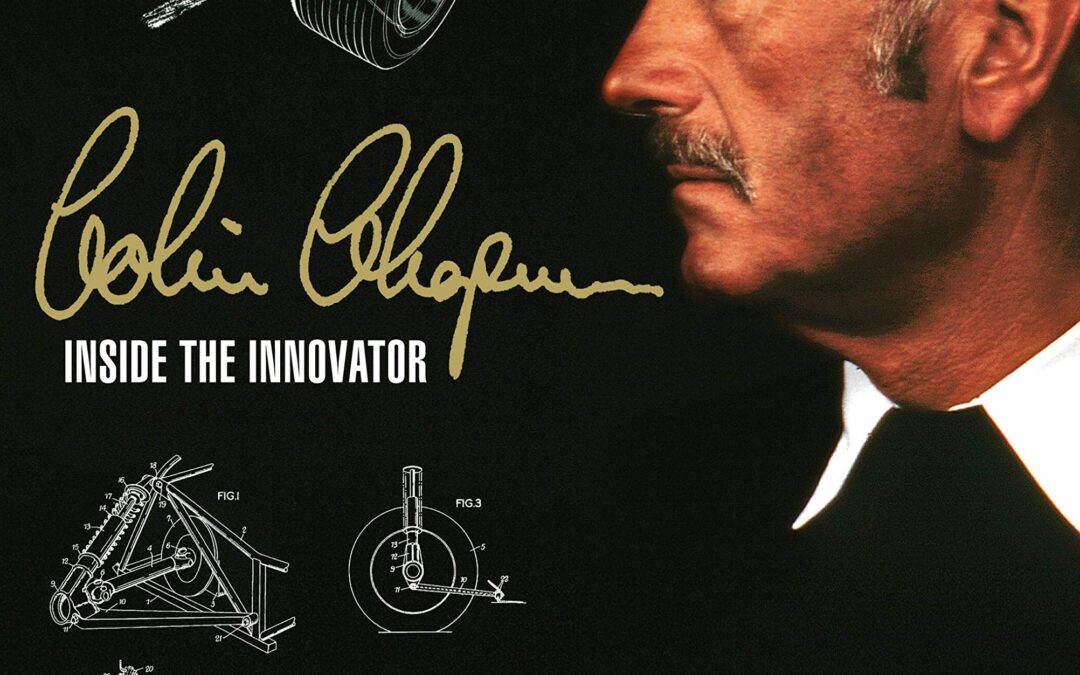
Renowned as one of the greatest creative forces in the world of the automobile, Lotus’s Colin Chapman (1928–82) left a mixed legacy. Was he an unparalleled innovator or an uninhibited exploiter of the uncredited ideas of others? In this landmark book, celebrated author Karl Ludvigsen gets to grips with the legend, digging deep beneath the skin of Chapman and his cars to explore and expose the motivations that drove this mercurial and controversial genius. Interviews with key figures in the Chapman story mesh with information from the author’s extensive archives to make this book a unique and compelling encounter between the engineer-innovator and the historian-investigator.
- Conceiving concepts: assessment of the man whom Keith Duckworth described as ‘the most brilliant conceptual engineer I’ve known’.
- Engine enterprise: recognising that he was, in his words, ‘not an engine man’, Chapman made the best of engines available to him, whether Ford 1172 side-valve, BRM H-16, Cosworth DFV V8 or Pratt & Whitney gas turbine.
- Transmission topics: this chapter moves through Lotus-designed ‘Queerbox’ transaxles, four-wheel drive, automatic clutch actuation and much more.
- Suspension sagas: from makeshift suspension ingenuity on his first Austin-based special to espousal of active suspension just before his death, Chapman gained and exploited an advanced understanding of a car’s underpinnings.
- Structure stories: Chapman’s accomplishments in this field are numerous. Best-known among them are his monocoque innovations, in glass-fibre for the Elite road car and aluminium for the F1 Type 25.
- Whittling weight: obsession with lightness was a Chapman mantra throughout his life. It contributed hugely to the success of his cars, occasionally at an expense of strength and safety that scared off some drivers.
- Aerodynamic adventures: Chapman enjoyed aerodynamics — ‘a very absorbing subject’ — and was at the forefront of major F1 developments in this area.
- Discovering downforce: early insights with wings and wedge-shaped bodies, exemplified by his Types 56 (Indycar) and 72 (F1), led ultimately to the pioneering breakthrough of traction-enhancing ground effect, which reached full flowering with the F1 Lotus 79.
- Ludvigsen gives special attention to Chapman’s exploits at Indianapolis, where he and his cars transformed the nature of America’s premier race with stunning innovations far from the safety of home.
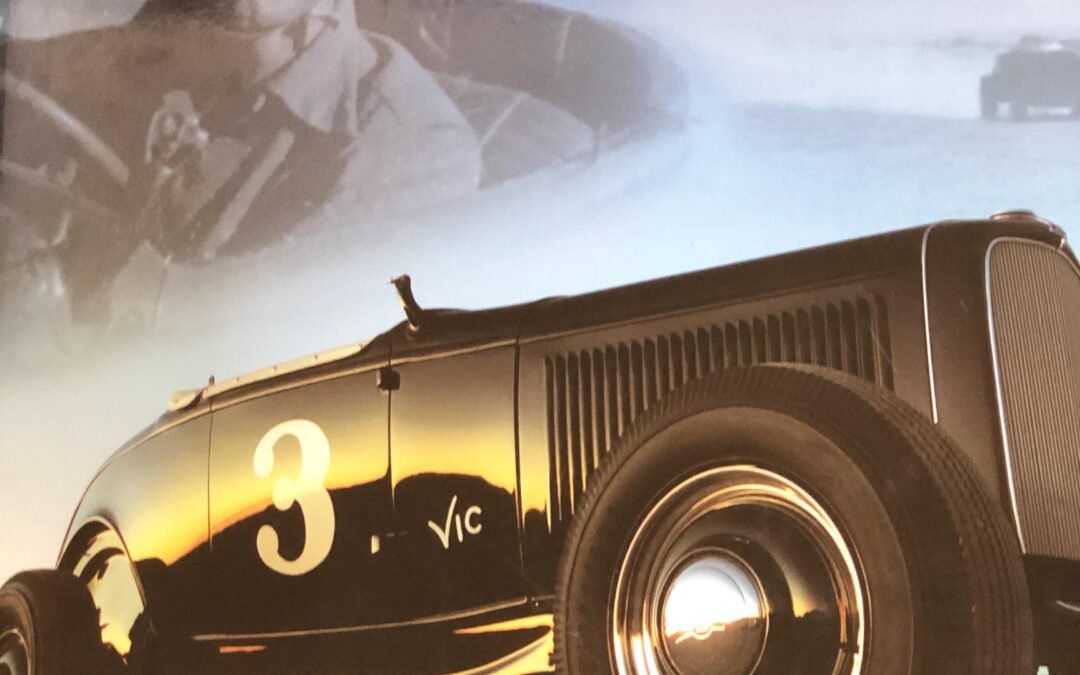
SIGNED to Phil Hill by Vic Edelbrock and Tom Madigan
Tom Madigan, with foreword by Benny Parson, NASCAR champion. The Edelbrock Corporation emerged from a young mechanic’s dream in Southern California during the earliest years of the American love affair with the automobile. One of the central figures of the hot rod culture that began before World War II and blossomed after the war, Vic Edelbrock, Sr. built his company around a simple philosophy: never overextend yourself, and never put your name on a product that hasn’t been tested and proven true. When Vic Edelbrock, Jr. took over after his father’s death, he stayed true to the family philosophy while incorporating progressive marketing plans to grow the company into a corporate giant. It is the last family owned automobile aftermarket company in the industry.Edelbrock Made in USA is the story of the company’s growth from a simple shop at the rear of a gas station to an American institution. It is at the heart of the history of the earliest drag racers and land speed racers, it is woven into the early days of NASCAR, and it flourishes today in the cars owned by enthusiasts and ordinary drivers across America who boast Edelbrock equipment. It is the story of a company whose influence not only helped shape automotive performance, but also led the automotive aftermarket industry in addressing and conforming to the clean air and safety regulations that have emerged over the past 35 years. And it is the story of an iconic family business that has preserved its values and its spirit of independence, creativity, philanthropy, and fun over three generations.

‘Glorious…gripping and sometimes tragic’ Robbie Coltrane
The inspirational story of the Bentley Boys and Le Mans – the race they made their own.
Le Mans, 1927. W.O. Bentley peered into the dusk. His three cars, which had led from the start, were missing. Two years running he had failed to finish. Once again he was staring into a void. Racing, his shareholders told him, was a waste of money. This race looked like being his last.
W.O’s engineering skills had been forged on the Great Northern railway and in the skies of the First World War, where Bentley-powered Sopwith Camels took the fight to Germany’s Red Baron. Determined to build and race his own cars, he assembled a crack team from all strata of 1920s Britain, from East End boys Leslie Pennal and Wally Hassan to multi-millionaires Woolf Barnato and Tim Birkin, men in search of adventures to blaze their way out of the dark past.
They dedicated themselves to building the perfect road and racing car. In the hayloft above their workshop, the first Bentley was born and soon it was the car of choice for the fast-living upper classes. They raced at the fashionable Brooklands circuit and then set their sights on the fledgling 24 Hours Le Mans race. An audacious goal for a British car, yet the Bentley Boys rose to the challenge. But on that night in 1927, after the biggest crash in racing history claimed their cars, could they still pull it off and put British motor racing on the map?
In the 1920s, Bentley Motors burned brightly but all too briefly; yet its tale, filled with drama, tragedy, determination and glory still shines a century on.
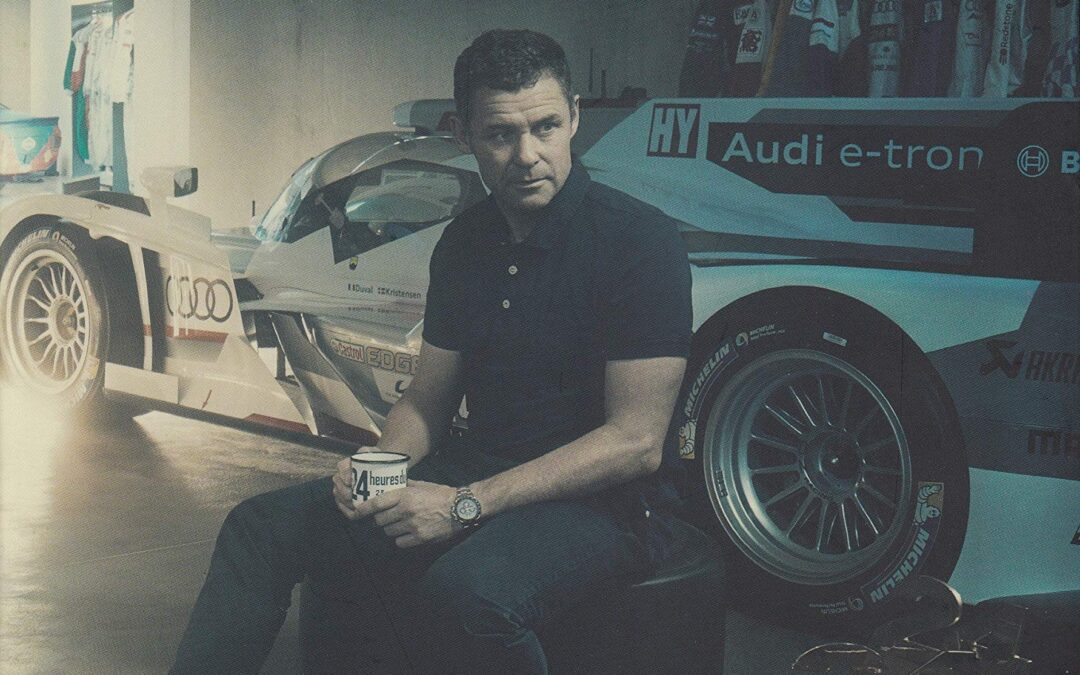
Between 1997 and 2014, Tom Kristensen won the world’s toughest motor race, the Le Mans 24 Hours, a record nine times and finished on the podium on five more occasions. Every time his car made it to the finish, in fact, he was in the top three. It is no wonder that this great sports car driver is known as ‘Mr Le Mans’ to motorsport fans around the world.
Now retired from racing, Kristensen shares in this book his deepest personal reflections and insights from inside and outside the cockpit. He looks back on more than 30 years spent striving for perfection in racing and tells of the battles and setbacks that sometimes seemed impossible to overcome, including a terrible accident in 2007.
- Climbing the racing ladder, from karting into Formula 3 single-seaters, including championship titles in Germany (1991) and Japan (1993), then Formula 3000 and a Formula 1 testing role with Tyrrell.
- Winning as an underdog on his first visit to Le Mans, in 1997 driving an elderly Joest-run privateer Porsche in which he impressed all onlookers with a night-time charge to vanquish Porsche’s factory-entered favourite.
- His second Le Mans victory came in 2000 on his maiden drive for Audi in the R8, a car that was to become all-conquering.
- Kristensen won the next five editions of Le Mans, four times with Audi and once with Bentley (in 2003), his last victory in this sequence taking him past Jacky Ickx’s previous record at the Circuit de la Sarthe.
- His eighth win came in one of the all-time classic contests at Le Mans, in 2008, a rollercoaster of a race in which his ageing diesel-powered Audi was never expected to beat the fancied works Peugeots.
- One more victory with Audi in 2013 sealed his reputation as a true legend of Le Mans.
- His story includes exploits at other racetracks all over the world, none more prolific than Sebring, home of America’s long-established classic endurance race that Kristensen won six times.
- Personal reflections together with contributions from notable observers — including English journalists Gary Watkins and Charles Bradley — complete a truly rounded portrait of the man and his achievements.
Voted ‘Sports Book of the Year’ when originally published in Kristensen’s native Denmark, this thoughtful memoir is now available in English.

SOLD OUT
See digital version HERE
This handbook is packed with flathead Ford building and tuning tips, describing proven combinations for both the street and the track. Complete buildups of both normally aspirated and supercharged flatheads are presented with actual test results. The featured engine, “Killer,” made over 215 hp naturally aspirated, and 335 hp supercharged! Find out what really works for making serious flathead horsepower without breaking the engine or the budget!

From bestselling author, racer and stunt driver Ben Collins – the man who was The Stig – comes a story of spies, speed and hard-driving genius: a driver’s love letter to one of the world’s best-loved machines.
Aston Martin’s first, wickedly fast models were forged at a time when Ferrari’s premises at Maranello was nothing but a ploughed field. This book celebrates a century of innovators who kept the fire burning brightly for over a century, from the visionary pioneers Martin and Bamford to modern-day design guru Adrian Newey; from a glamorous web of pre- and post-war spies and racing drivers, to David Brown and the achingly beautiful DB models beloved of Bonds past and present.
Ben Collins explores the car with the double-o prefix from a unique perspective behind the wheel, carving through country lanes in his father’s V8 Vantage, driving Aston Martins in four James Bond movies and competing against them in the legendary Le Mans 24-hour race.
Ultimately, this is a very British success story: of a triumph of engineering that has burned brightly from the Roaring 20s to the 2020s, and an iconic car that never says die.

Shelby Mustang details the entire story of these fantastic cars, from the early prototypes built in Shelby’s Los Angeles shop to today’s Ford-engineered high-tech performers.
Written by one of the world’s foremost authorities on Shelby automobiles, critically acclaimed author Colin Comer, and with a foreword by Lee Iacocca, the American automobile executive credited with the successful development of the Mustang, this is the definitive account of the Shelby.
When Ford wanted to toughen up its super-successful new Mustang, they approached Carroll Shelby to give it the performance image it so sorely lacked. Beginning with a 1965 “K-Code” 289-cubic-inch-powered Mustang fastback, Shelby applied the same formula that had made his Cobra sports cars such devastating performers both on and off the track: more horsepower, less weight, balanced handling.
The GT350 quickly established itself as a bonafide force in SCCA B-Production racing, twisting back roads, and boulevards alike—setting the course for future Shelby Mustangs, like the big-block GT500. Though those original Shelby Mustangs were done by 1970, Ford dusted off its Shelby relationship in 2006 and has been producing high-performance Ford Mustang Shelbys ever since.
This is a must-have read for any fan of American performance cars, whether you’re a muscle-era original or a 21st-century stormer.

The long and successful cooperation between Porsche and the Stuttgarter Karosseriewerk Reutter & Co. GmbH was, right from its beginning, more than just a marriage of convenience. It was based on mutual sympathy of two unique companies within the automotive industry.
In 1931 the Reutter coachwork company, founded in 1906, started building prototypes of what would later be known as Volkswagen on behalf of the Porsche engineering office. In 1949 Porsche gave the order to Reutter to produce 500 bodies for the Porsche sports car, and around Easter time 1950 the first Porsche 356 ever to be constructed in Germany was finished in Reutter’s factory I. Porsche bought ground from Reutter within the plot of its factory II in order to build a new construction site for manufacturing motors. At the same time Reutter moved the complete bodywork to factory II in Zuffenhausen and from that moment most of the legendary Porsche 356 were manufactured in intensive cooperation and side by side.
Besides those vehicles made by hand in serial-production Porsche 356 presents many prototypes and special cars made for Porsche up to the point of collective evolution of the later called Porsche type 911.
The book’s focus is on the description of the development of a Porsche 356-body, colorfully illustrated and detailed as never before. Much of the material used was taken from the Reutter-family archive. Previously unpublished documents and pictures were found in several institutional and private archives, especially the archive of Porsche itself.
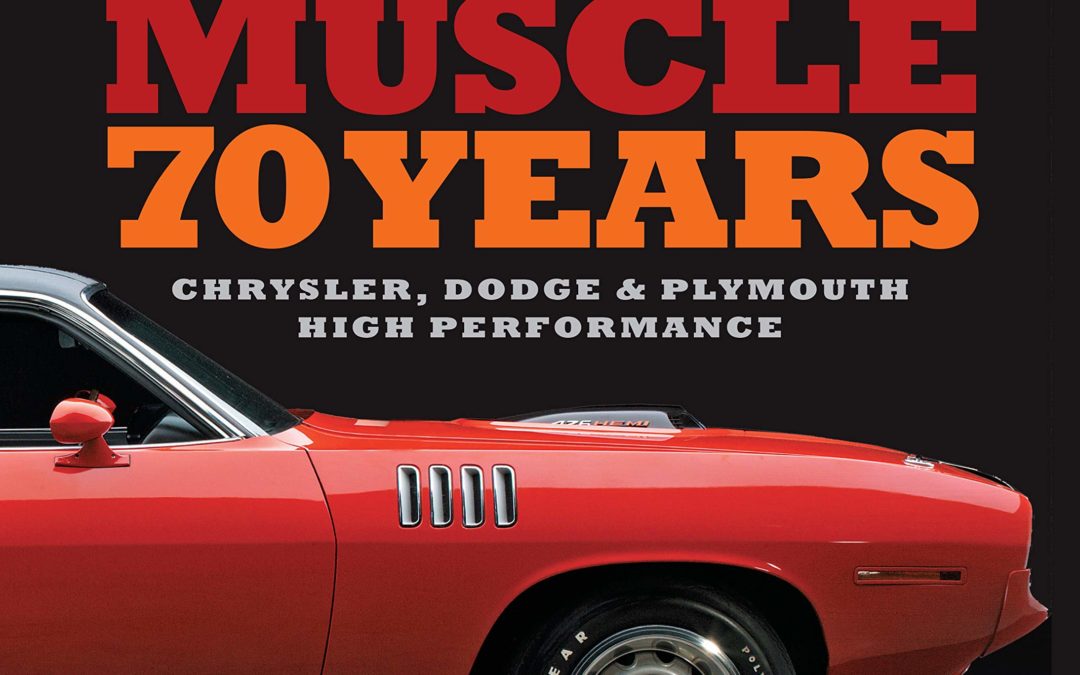
Hemi Muscle 70 Years is the complete illustrated story of the legendary engine and the cars it powered. Author Darwin Holmstrom explores how Chrysler’s Hemi engine became the number one choice for drag racers and stock car racers across the country, campaigned to great success by drivers like Richard Petty, Don Garlits, David Pearson, Sox and Martin, and more.
In 1950, Chrysler debuted a potent high-performance overhead-valve V-8 engine. Originally called the FirePower, it would soon be better known by the name “Hemi.” Intended to power Chrysler’s luxury cars, the Hemi found a higher calling: humiliating its competitorson the street and at the race track.
On top of learning how the Hemi engine came to be, you’ll also see how the Hemi remained the engine to beat on the street, stuffed into some of the most desirable performance cars in automotive history: the ‘Cuda, Road Runner, Charger, GTX, and Challenger, to name a few. The Hemi made such a lasting impact that Chrysler revived it as the top engine for the twenty-first century Challenger and Charger.
Today, Hemi is a household name, known to enthusiasts and consumers alike, often imitated, never duplicated. Having found its way into both sports cars and luxury cars, you’ll often hear: “Hey, has that thing got a Hemi in it?” This book answers “yes”…and offers the full exciting story!

An insight into the design, construction, operation and maintenance of an … SAR and WIP helicopter (Haynes Manuals)
With a full and active service life of more than 40 years with the Royal Navy and the RAF, the Westland Wessex was one of the most versatile helicopters of the Cold War era. As a British-built turbine-powered development of the American Sikorsky H-34, the Westland Wessex was developed and produced under license by Westland Aircraft (later Westland Helicopters). One of the main differences from Sikorsky’s H-34 was the replacement of the piston-engine power plant with a turboshaft engine. The Wessex was the first helicopter to be produced in large numbers that made use of a gas turbine engine. Early models were powered by a single Napier Gazelle engine, while later builds used a pair of Rolls-Royce Gnome engines.

Born in a small garage, in a pure Steve Jobs style, Dallara is today one of the most important companies in the world for the design and construction of racing cars, a true masterpiece of Italian genius. The founder was the engineer Gian Paolo Dallara, a man inextricably linked to his land but able to face international challenges thanks to intuition, a mental form directed to innovation and an extraordinary technical skills. The volume tells a story out of the ordinary and a technologically advanced reality, which bases its success on the enthusiasm and passion of young engineers and on the curiosity of the founder. But it also speaks of the most significant moments and victories and how the future and tradition find a common field of action in the small town of Varano de’ Melegari.



